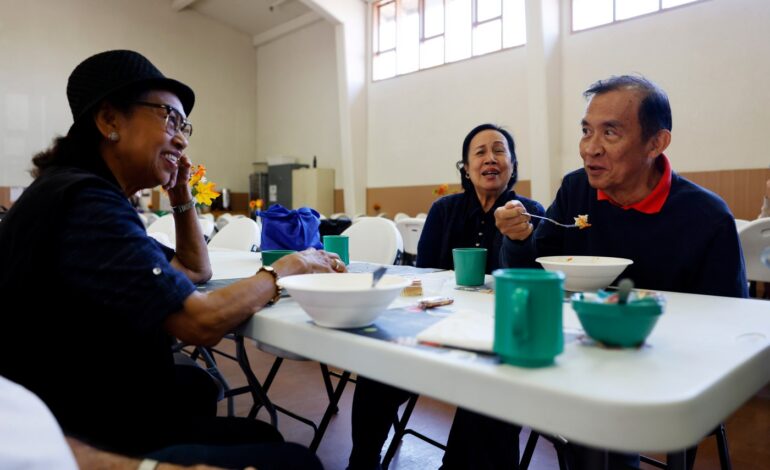Bay Area Senior Services Face Cuts Amid Stretched Budgets

Funding shortfalls from government budgets are threatening vital senior services across the Bay Area. Programs that provide healthy meals, exercise sessions, and social activities are being significantly impacted as local service providers grapple with reduced financial support.
In April, the Downtown Oakland Senior Center announced a reduction in its operational hours, cutting services on Fridays and limiting hours on other weekdays by two hours. This decision has left many seniors, such as Barbara Griffin, an 81-year-old retiree, feeling neglected. Griffin, who has frequented the center for over 20 years, expressed her concern over having to choose between her beloved Zumba and “Keep it Moving” classes. “I feel like some people would rather have us sitting on a park bench feeding pigeons,” she remarked, highlighting a growing sentiment among seniors that their needs are being overlooked.
Similar challenges are unfolding in Sunnyvale, where the Sunnyvale Senior Nutrition Program has begun turning away participants due to an overwhelming demand that exceeds funding. Ronald Nathan, chair of the program’s volunteer committee, stated, “The numbers are climbing. At this rate, without systems to control overages, we could literally run out of food.”
The financial troubles facing these centers reflect a wider issue of government budget cuts. Earlier this month, Contra Costa County terminated a $277,000 contract with Meals on Wheels Diablo Region due to reductions in federal funding. This cut has halted weekly “Breakfast Bag” deliveries for hundreds of seniors relying on these services.
According to the Bay Area Census, the senior population is rapidly growing, with approximately 1.2 million residents aged 65 and older in the region. The increasing number of seniors is expected to place additional strain on already limited resources.
Bright orange flyers scattered throughout the Downtown Oakland Senior Center call for action, urging the community to “Save our Senior Centers.” For Barbara Tengeri, 83, this plea resonates on a personal level. She has been a regular for 23 years, initially drawn to the center through her late mother, who used to volunteer there. “Every time I come here, I think about my mother,” Tengeri said, expressing her gratitude for the friendships and meals provided, despite her unease about the recent cuts.
In Oakland, budget forecasts suggest that financial difficulties are likely to persist until at least 2030. Meanwhile, Santa Clara County is facing similar challenges, with rising costs outpacing revenue. Staffing shortages at senior centers have left them dependent on part-time volunteers, raising concerns about the impact on community connections.
A 65-year-old participant at the Oakland center, Friederike Droegemueller, lamented the effects of these cuts on social engagement. “A friend I’ve made at this center is sick right now, and I’ve seen her deteriorate because of the lack of social contact. We need our centers,” she emphasized.
The struggles extend south to Sunnyvale, where on a recent Thursday, Ginnie Reyes enjoyed a meal with friends at the Sunnyvale United Methodist Church. She expressed concern that further reductions in service would be “devastating for a lot of seniors,” as the program has become a vital social hub for many.
Nathan reported that the demand for meals has outstripped the program’s funding, with the kitchen serving nearly 200 meals daily, despite being funded for only 150. The church often absorbs the excess, but Nathan cautioned that this is not sustainable.
As more residents turn to local agencies for assistance, Sourcewise, a social services agency in Santa Clara County, noted a 10% increase in Meals on Wheels recipients over the past year. The inability to accommodate all requests not only denies seniors a meal but also deprives them of essential social interaction.
“If I had a chance to say anything to a county person right now, I would say think about the seniors because the value of this program is beyond food,” Nathan concluded, emphasizing the critical role these services play in the lives of older adults in the Bay Area.






